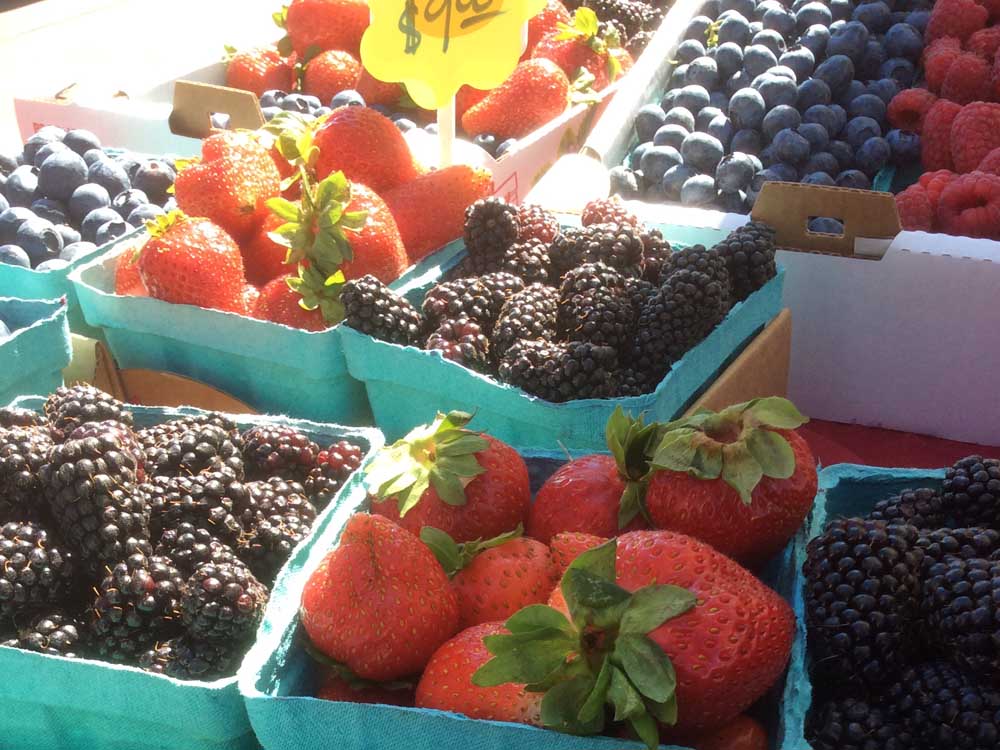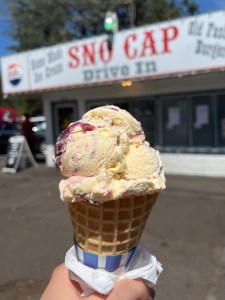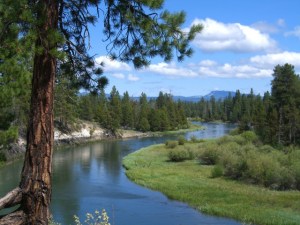Jams preserve berry season
Published 12:00 am Tuesday, August 2, 2016

- Jan Roberts-Dominguez / For The BulletinWhile fruit is plentiful this summer, take advantage of a few tips, such as preparing the fruit ahead of time, to split up the preserving process.
In the wonderful little novella, “Blue Jelly,” by former Rolling Stone writer Debby Bull, the main character gets dumped by her boyfriend and finds salvation in canning.
Says Bull’s heroine: “Canning may sound like a strange path out of the dark woods of despair … but when you’re really depressed, you have to do something that takes you out of the drama, that makes you detach from the big world and become kind of a tiny, controllable world, like one of berries and Ball jars. Just because this last thing didn’t work out and your heart is smashed, it doesn’t mean that all of your dreams will end in a big mess. Canning demonstrates this principle. Canning is a whole world of a thing to do. It requires that you get out of your head. It’s a Zen thing.”
Trending
Pure and simple, preserving is all of that and so much more. It’s a midsummer rite. A way to connect with your pioneer heritage. A mental release from the daily grind. Perspective. A satisfaction of that most primal instinct, which is to squirrel away bounty in the good times for the days when winter is pounding at the door.
Of course, I couldn’t let this discussion on preserving go by without talking about one of my all-time favorite jams, which (of course!) has a bit of a backstory. In my library of cookbooks a favorite is “Fancy Pantry” by Helen Witty. For anyone interested in the art of preserving, it’s a valuable and inspirational book, filled with delicious ways to capture the harvest.
One of Witty’s best jam recipes is Peerless Red Raspberry Preserves. I began sharing it with readers in the early 1990s. Each season, I would fine-tune it a bit, adding a dab of butter to reduce foaming, increasing the cooking time slightly to guarantee a gel, tweaking the preparation of the berries (if you add a handful of slightly under-ripe ones, which is where more natural pectin resides, you’ll achieve a firmer gel). But because the basic technique — a brief, fast boil, in a wide, shallow skillet — is the key to the recipe’s success, I always strive to give credit where credit is due. Thanks, Helen! And all of the benefactors of the gallons of preserves I’ve given away all these years thank you, too.
For any of you thinking you simply don’t have enough oomph to tackle preserving this summer, take heart. When time and energy is short, I like to do my canning in steps. Otherwise I’d have to forgo some fruits completely.
For jams, I peel, chop and measure out the fruit and combine it with the appropriate amount of sugar (and lemon juice if it’s called for) in a large bowl; cover the mixture with plastic wrap and refrigerate (or freeze). Then, hours — or even days (or months, if you choose the freezing alternative) — later, I proceed with the recipe by scraping the mixture into a large, heavy-bottomed pot and cooking the mixture as instructed.
If you’re using a recipe that calls for commercial pectin, then you’ll have to pay attention to the order the ingredients are added, which brings me to a few of the basics I want to cover this week that may help you through a tiny crisis or explain why your last batch of preserves didn’t come out exactly as planned.
Trending
Pectin tips
When making jams and jellies, if you’re using a recipe that calls for added pectin, the steps for combining the sugar and pectin are very specific. When you add the sugar depends on the type of commercial pectin you use. Follow your recipe, and do not attempt to switch powdered pectin for liquid or liquid for powdered; the two are not interchangeable.
Here’s a simple rule of thumb: When using powdered pectin, it is added to the strained juice or chopped fruit BEFORE heating. Next, bring the mixture to a full rolling boil — a boil that cannot be stirred down — THEN add the sugar. Bring to a boil again and boil for one minute.
When using liquid pectin, first you’ll combine the chopped fruit (or strained juice) with the sugar and bring the mixture to a full rolling boil (a boil that cannot be stirred down; stir constantly so you won’t scorch the mixture!). Then add the liquid pectin, bring to a full rolling boil again and boil for one minute.
Testing jams for doneness
With added pectin, jams, preserves, and marmalades will be done when they are boiled according to the individual instructions given in the recipe. Make sure you only use the quantities called for.
Without added pectin, jam is done when it reaches 8 degrees ABOVE the boiling point of water. And remember, because water boils more quickly the higher up you go on this planet, it tracks that adjustments would have to be made when determining the jelling point. Thus, the jelling point is:
• 220 degrees from sea level up to 1,000 feet
• 216 degrees at 2,000 feet
• 214 degrees at 3,000 feet
• 212 degrees at 4,000 feet
• 211 degrees at 5,000 feet
• 209 degrees at 6,000 feet
• 207 degrees at 7,000 feet
• 205 degrees at 8,000 feet
— Jan Roberts-Dominguez is a Corvallis food writer, artist, and author of “Oregon Hazelnut Country, the Food, the Drink, the Spirit” and four other cookbooks. Readers can contact her by email at janrd@proaxis.com, or obtain additional recipes and food tips on her blog at www.janrd.com.








